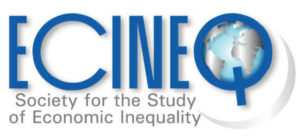So close yet so unequal
Working Paper 2018-477
Abstract
This paper contributes to the literature on neighborhood inequality along both theoretical and empirical lines. We introduce a new neighborhood inequality index (NI) to measure income inequality within individual neighborhoods of varying sizes, and study its normative and statistical properties. The NI index is used in combination with a large database of income distributions defined on a fine-grained geographic scale to study neighborhood inequality in American cities over the last 35 years. Inequality within small individual neighborhoods is found to grow steadily over the period, albeit heterogeneously across cities. We investigate the intergenerational consequences of a rising NI index, exploiting labor market responses to minimum wage regulation as a source of identification. We find that lower neighborhood inequality during childhood makes income mobility for children with a disadvantaged parental background more likely.
Authors: Francesco Andreoli, Eugenio Peluso.
